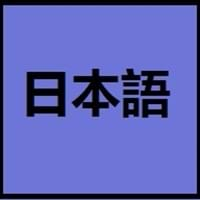Irish vs Japanese
Countries
European Union, Ireland
Japan
National Language
Ireland
Japan
Second Language
Ireland
Not spoken in any of the countries
Speaking Continents
Europe
Asia, Pacific
Minority Language
United Kingdom
Palau
Regulated By
Foras na Gaeilge
Agency for Cultural Affairs (文化庁) at the Ministry of Education
Interesting Facts
- In Irish language, there are no exact words for "yes" or "no".
- There are different set of numbers for counting humans and another set for counting non-humans in Irish Language.
- In Japanese Language, there are 4 different ways to address people: kun, chan, san and sama.
- There are many words in Japanese language which end with vowel letter, which determines the structure and rhythm of Japanese.
Similar To
Not Available
Korean Language
Derived From
Not Available
Not Available
Alphabets in
Irish-Alphabets.jpg#200
Japanese-Alphabets.jpg#200
Writing Direction
Left-To-Right, Horizontal
Left-To-Right, Horizontal, Top-To-Bottom
Hello
Dia dhuit
こんにちは (Kon'nichiwa)
Thank You
Go raibh maith agat
ありがとう (Arigatō)
How Are You?
Conas atá tú ?
お元気ですか (O genki desu ka?)
Good Night
Oíche mhaith
おやすみなさい (Oyasuminasai)
Good Evening
Tráthnóna maith duit
こんばんは (Konbanwa)
Good Afternoon
Tráthnóna maith duit
こんにちは (Konnichiwa!)
Good Morning
Dia dhuit ar maidin
おはよう (Ohayō)
Please
le do thoil
お願いします (Onegaishimasu)
Sorry
Tá brón orm
ごめんなさい (Gomen'nasai)
Bye
Slán
さようなら (Sayōnara)
I Love You
Is breá liom thú
愛しています (Aishiteimasu)
Excuse Me
Gabh mo leithscéal
すみません (Sumimasen)
Dialect 1
Connacht Irish
Sanuki
Where They Speak
Connacht
Kagawa
How Many People Speak
Not Available
Dialect 2
Munster Irish
Hakata
Where They Speak
Munster
Fukuoka
Dialect 3
Ulster Irish
Kansai
Where They Speak
Ulster
kansai
Speaking Population
Not Available
Second Language Speakers
Not Available
Native Name
Gaeilge (na hÉireann) / An Ghaeilge
日本語
Alternative Names
Erse, Gaeilge, Gaelic Irish
Not Available
French Name
irlandais moyen
japonais
German Name
Mittelirisch
Japanisch
Pronunciation
[ˈɡeːlʲɟə]
/nihoɴɡo/: [nihõŋɡo], [nihõŋŋo]
Ethnicity
Irish people
Japanese (Yamato)
Language Family
Indo-European Family
Japonic Family
Subgroup
Celtic
Not Available
Branch
Goidelic
Not Available
Early Forms
Primitive Irish, Old Irish, Middle Irish, Classical Irish, Irish
Old Japanese, Early Middle Japanese, Late Middle Japanese and Early Modern Japanese
Standard Forms
An Caighdeán Oifigiúil
Japanese
Language Position
Not Available
Signed Forms
Irish Sign Language
Signed Japanese
Scope
Individual
Individual
ISO 639 6
Not Available
Not Available
Glottocode
iris1253
nucl1643
Linguasphere
50-AAA
45-CAA-a
Language Type
Living
Living
Language Linguistic Typology
Verb-Subject-Object
Subject-Object-Verb
Language Morphological Typology
Fusional
Agglutinative, Synthetic
Irish and Japanese Language History
Comparison of Irish vs Japanese language history gives us differences between origin of Irish and Japanese language. History of Irish language states that this language originated in c. 750 whereas history of Japanese language states that this language originated in 1185. Family of the language also forms a part of history of that language. More on language families of these languages can be found out on Irish and Japanese Language History.
Irish and Japanese Greetings
People around the world use different languages to interact with each other. Even if we cannot communicate fluently in any language, it will always be beneficial to know about some of the common greetings or phrases from that language. This is where Irish and Japanese greetings helps you to understand basic phrases in Irish and Japanese language. Irish word for "Hello" is Dia dhuit or Japanese word for "Thank You" is ありがとう (Arigatō). Find more of such common Irish Greetings and Japanese Greetings. These greetings will help you to be more confident when conversing with natives that speak these languages.
Irish vs Japanese Difficulty
The Irish vs Japanese difficulty level basically depends on the number of Irish Alphabets and Japanese Alphabets. Also the number of vowels and consonants in the language plays an important role in deciding the difficulty level of that language. The important points to be considered when we compare Irish and Japanese are the origin, speaking countries, language family, different greetings, speaking population of these languages. Want to know in Irish and Japanese, which language is harder to learn? Time required to learn Irish is 36 weeks while to learn Japanese time required is 88 weeks.





